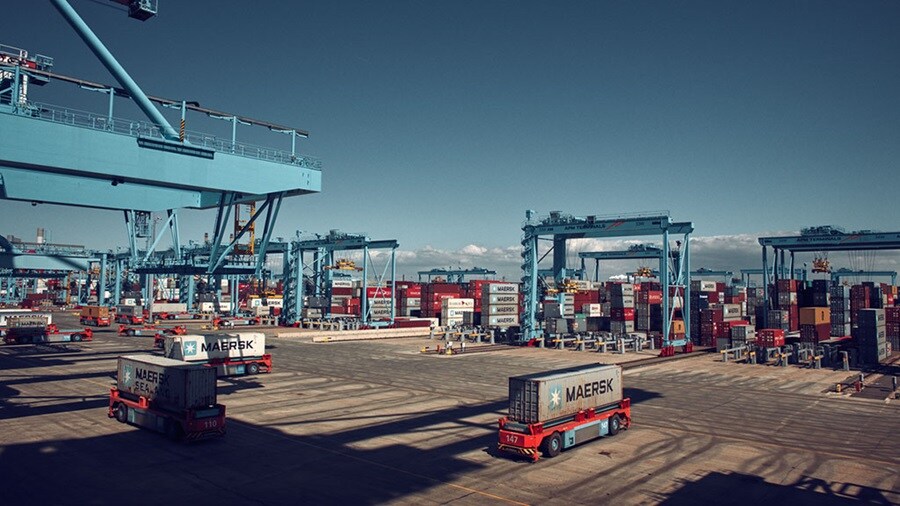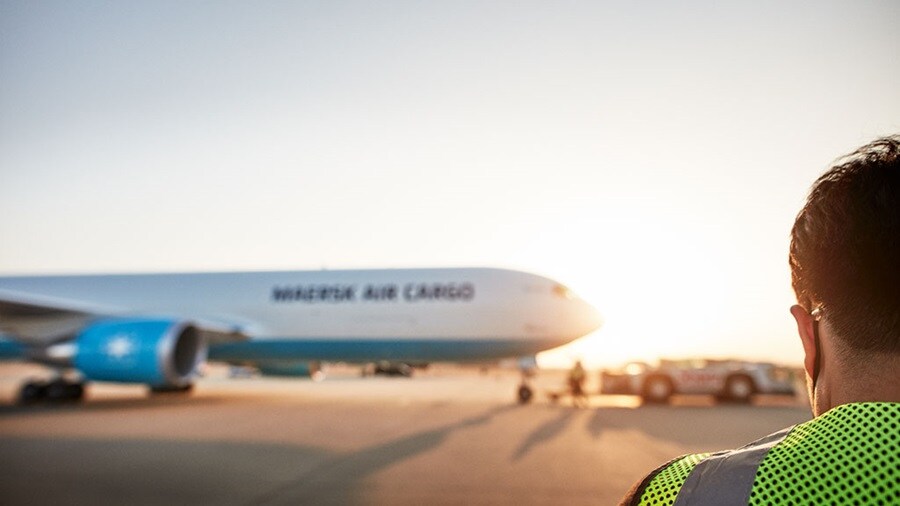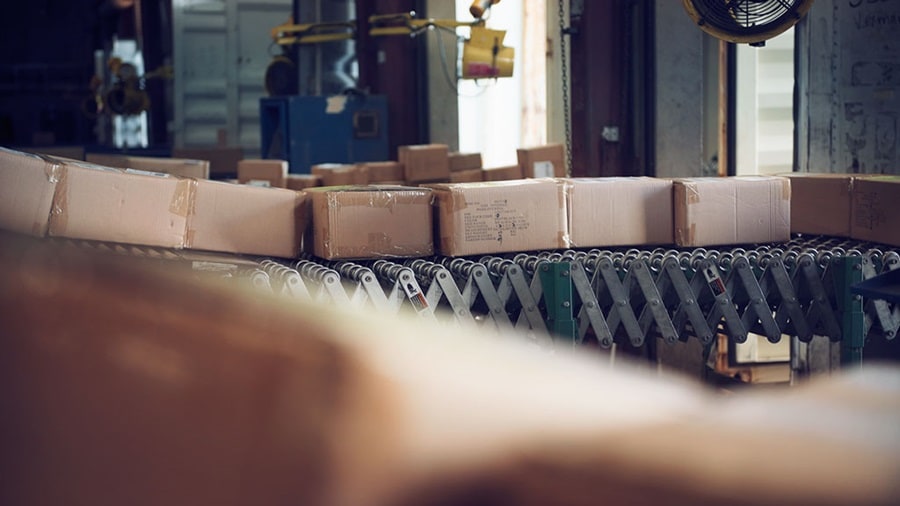Ocean and Key Ports Update
Maersk teams are keeping a very close eye on the situation in and around the Red Sea and continuing to draw up mitigation plans for any affected vessels that require diversion. We will be reaching out to all affected customers directly to discuss options and new delivery schedules for their cargo as soon as possible. Ports in Israel continue to operate as normal and bookings to and from the country continue to be accepted.
In the south of Europe, Hub terminals are performing stably with good operational outcomes. In West Mediterranean, Tangier MED2 expansion will bring extra capacity and capability to the area – the first phase with extra yard space, an additional 200 metres of quay, and two new gantry cranes is now operational, while the second phase with an additional 200 metres of quay and two more gantry cranes, will be completed before the end of the year.
Operations continue to be steady on the northern side of the continent, although typical inclement weather frequently observed this time of year has caused some disruption. Find out how winter weather affects port operations and what our teams are doing to minimise delays for our customers.

Our teams are seeing a higher demand for exports out of Europe, particularly into Asia and the Middle East, resulting in terminal yards getting more full, but maintaining a manageable level of yard density. We kindly ask customers to please pick up their containers as soon as possible after discharge to support healthy yard density across all terminals. In certain Hub terminals, such as Port Said, we are seeing an increase in demand for value added services that allow customers the flexibility to pause, accelerate, or divert their cargo when needed.
In terms of schedule reliability, Sea Intelligence has recently published a new reliability report, putting Maersk at the top of the most reliable carriers, with schedule reliability of 71.1% in October 2023. Reliable cargo delivery remains a major goal for our teams, who keep doing their utmost to protect the cargo flowing through the ocean connection and gate.
In the coming weeks, we expect the strong export demand to continue until January, mandating close coordination with our customers in terms of planning, and internal alignment to safeguard delivery quality. At the time when winter weather disruptions are expected to put additional pressure on network reliability, our teams remain committed to mitigating the impact for our customers and drawing up necessary contingencies to ensure network stability.
Businesses are focusing on getting their 2024 logistics strategy right as we move into the new year, and our experts recently discussed the major supply chain risks and key questions in episode one of our ‘Managing your Logistics Strategy in 2024’ series.
Air Freight Update
Now very much into peak season, air freight services continue to be a reliable and fast way to deliver time-sensitive cargo ahead of the Christmas period and Chinese New Year.
With this in mind, Maersk Air Cargo recently launched a trial route from Hangzhou, China, into Bournemouth Airport in the United Kingdom to cater to peak demand. The weekly service will be assessed in early 2024 to determine future customer requirements.

The trial route flies via the Billund Hub in Denmark, which has become the nucleus for Maersk’s air freight operations in Europe. Click here to watch episode two of our ‘Air is Essential’ series and learn more about it.
Elsewhere, Maersk partners are continuing to operate to and from Israel amid the ongoing situation in the region, however we remain unable to charter flights to and from Israel until further notice. Stay up to date with the latest information on our dedicated advisory and FAQ page.
Longer-term, after a year of uncertainty in 2023, Xeneta’s Air Freight Outlook 2024 suggests that air freight seasonality will be more prominent in the new year and that businesses are tying into longer-term contracts away from the Spot market. If you wish to discuss options for the year ahead, please reach out to your local Maersk representative.
Please click here to find helpful information about our air freight network and our services to and from Europe.
Inland Update
After the increase in just-in-time logistics pushed more volume onto the road, the tide is once again turning back to trains, with the European rail infrastructure market size projected to go from $135,81 billion in 2022 to $185,04 billion in 2029. Providing a viable alternative to road transport, rail transportation is a key factor in allowing businesses across Europe to contribute to the European Union’s goal of reducing GHG emissions by at least 55% by 2030.

Beyond decarbonisation, inland transportation via rail offers an opportunity for businesses in challenging times of truck driver shortages, traffic congestions, and administrative burdens at the border. With fixed schedules and higher freight capacity, rail provides a reliable option for businesses looking for consistent and cost-effective transportation. Find out more about decarbonisation and reliability opportunities of European rail in our latest E-book.
To support the efforts of bringing Europe’s rail logistics back on track, our teams across the continent have done identified improvement opportunities for new connections in cross-border and intercontinental rail.
Our recent launch of rail service through the Middle Corridor, the shortest route from China to Europe, strategically connects the two continents and offers opportunities for businesses along the way.
On the other side of the continent, our teams have identified a unique opportunity to connect the Port of Barcelona with destinations in the South of France, which led to the launch of the new rail offering earlier this year.
Customs Update
The start of the new year will bring several new regulations in international trade and customs, including a new version of the EU Combined Nomenclature (CN), which takes effect on 1 January 2024. The Combined Nomenclature is updated every year, and compared to last year, the tariff's changes are relatively minor.

The Combined Nomenclature forms the basis for the declaration of goods at importation or exportation, or when subject to intra-Union trade statistics. This determines which rate of customs duty applies and how the goods are treated for statistical purposes. Businesses trading products with updated or new CN codes, need to ensure they're reflected in customs declarations to avoid errors, potential fines, and delays due to goods stuck in customs. Businesses need to take action to ensure accuracy by checking and updating master data and templates. Find out more about the latest version of Combined Nomenclature.
European Union’s 42 preferential trade agreements with 74 countries are now worth over two trillion euros, 44% of the EU’s total foreign trade. The trade agreements are a game-changer for businesses, especially the 670,000 small and medium-sized enterprises (SMEs) exporting beyond the borders of the EU. Such trade agreements support exports, resilience, and diversification by opening up new opportunities, making exports more resilient to external shocks, and securing access to important inputs and reducing over-dependence on a single country. Ensuring transparent and predictable commercial conditions, the agreements connect Europe to growth hubs where 85% of the 2024 expansion is anticipated. To optimise the value of free trade agreements for your business, get in touch with our customs consultants.
The new year will see a number of new regulations come into effect, which could have an impact on your supply chain. To make sure our customers are up to speed, we’ve compiled the major changes here and our teams remain at your disposal should you require support.
Ecommerce Update
The end of last month saw global shopping events Black Friday and Cyber Monday hit consumers and retailers across Europe. Ahead of the shopping peak, consumers around Europe indicated trends similar to what we have seen in previous years – majority of consumers intending to shop during Black Friday sales and planning their purchases ahead of time and mostly in areas of electronics, clothing, and accessories. Early stats show that online sales across the continent grew by seven percent compared to Black Friday the previous year, and many carriers have broken records in the number of parcels processed.

However, looking at the year-to-date online growth, which currently stands at 11%, Black Friday growth is in reality four percentage points lower than the yearly ecommerce growth. Promotions earlier in the quarter, such as Singles’ Day, combined with the trend of extending Black Friday promotions in the week before and following the Black Friday day itself, may have diluted the peak of one of the biggest ecommerce days.
Other industry reports showed frustration signals, such as rage clicks and error messages, led to a 16% increase in consumers’ digital frustration compared to the same period last year.
While seasonal sales, lenient return policies, and good product availability are essential in attracting a loyal customer base, ecommerce businesses must not sacrifice the consumer experience, including both the customer journey and the post-purchase experience. Find out how supply chain digitalisation can lead to a better customer experience.
Useful Links
To sign up for the Maersk Europe customer newsletter, click here and update your preferences when prompted via email.
Check the latest Maersk North America market update.
Check the latest Maersk Latin America market update.
无论您需要什么,我们都可以随时为您提供帮助
I agree to receive logistics related news and marketing updates by email, phone, messaging services (e.g. WhatsApp) and other digital platforms, including but not limited to social media (e.g., LinkedIn) from A. P. Moller-Maersk and its affiliated companies (see latest company overview). I understand that I can opt out of such Maersk communications at any time by clicking the unsubscribe link. To see how we use your personal data, please read our Privacy Notification.
By completing this form, you confirm that you agree to the use of your personal data by Maersk as described in our Privacy Notification.
